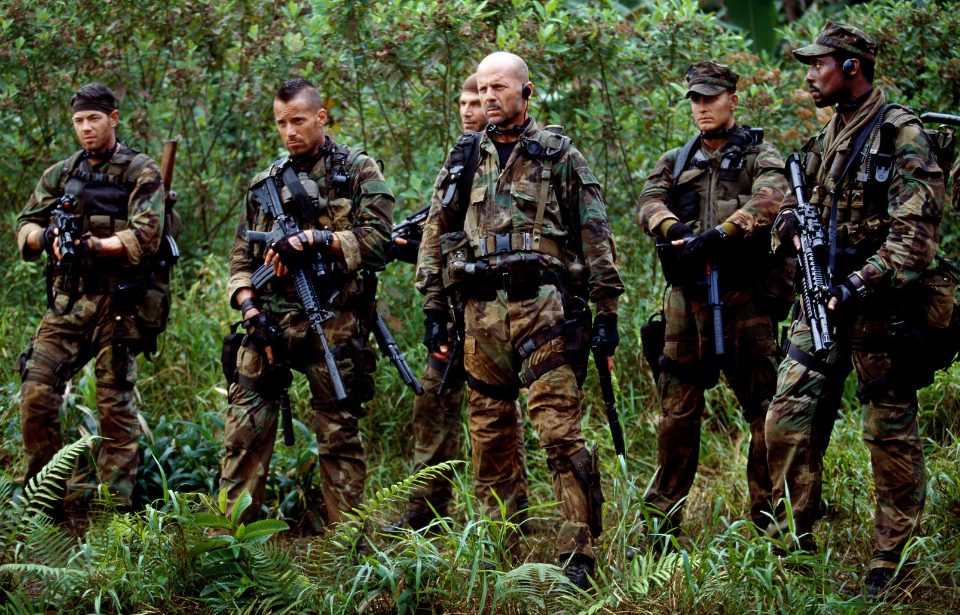US Navy SEALs are infamous special operators. It’s fitting, then, that they’ve been the subject of numerous films, among them 2003’s Tears of the Sun. Starring Bruce Willis, Cole Hauser, Tom Skerritt and Monica Bellucci, it’s an action-packed special ops feature that presents a moral message for post-9/11 America.
What is Tears of the Sun about?
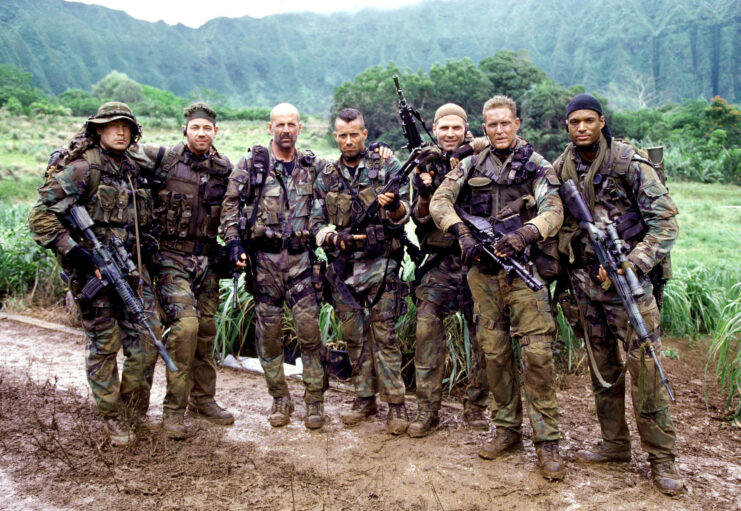
After a military coup d’etat in Nigeria, all Americans are advised to evacuate the country. A US Navy SEAL team, led by Lt. A.K. Waters (Bruce Willis), is ordered to go in and extract Dr. Lena Fiore Kendricks (Monica Bellucci) and a group of missionaries, should they wish to leave.
The team reach Kendricks before the rebel forces do. However, she says she won’t leave without the patients she’s been so diligently treating. Reluctantly, Waters agrees to take those capable of traveling. They embark on a 7.5-mile trek while the missionaries stay behind to care of those too injured to make the journey.
Once they reach the extraction point, Kendricks is forced onto an awaiting helicopter, while the unarmed refugees are abandoned. However, en route to the aircraft carrier USS Harry S. Truman (CVN-75), the SEALs see the missionaries’ camp has been destroyed. Waters then orders them to return for the refugees they left behind.
It’s decided the SEALs will take the refugees to Cameroon on foot. During this second trek, they enter a village being brutalized by rebel fighters. A firefight ensues, leaving the team disturbed by what they’ve just witnessed. While they continue to the border, the rebels track them. The reason for this, they soon find out, is that one of the refugees is the former president’s son. Despite this, the SEALs continue toward Cameroon.
The climactic finale occurs when the team and refugees arrive at the border. A second firefight with the rebels ensues, this time including air support from two McDonnell Douglas F/A-18 Hornets. The SEALs take casualties, but successfully get the refugees, Kendricks and the bodies of the fallen across the border.
Tears of the Sun concludes with a philosophical quote attributed to Edmund Burke: “The only thing necessary for the triumph of evil is for good men to do nothing.”
Repurposed history
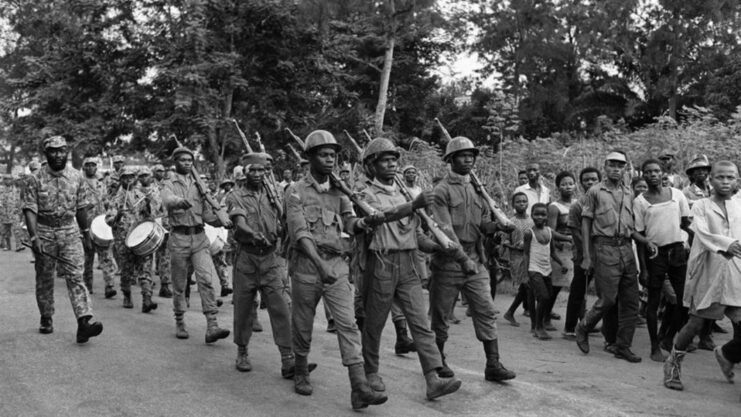
While realistic, what’s depicted in Tears of the Sun is fictional. The film repurposed real-life events that occurred on a Canadian Joint Task Force Two mission in Columbia, with the setting changed to the Nigerian Civil War.
The conflict, also known as the Nigerian-Biafran War or the Biafran War, occurred between Nigeria and the Republic of Biafra, a separatist state that declared independence toward the start of the conflict, from 1967-70. It ended in a Nigerian victory and the deaths of millions from fighting and famine. Millions more were displaced, including 500,000 who fled abroad.
Military accuracy
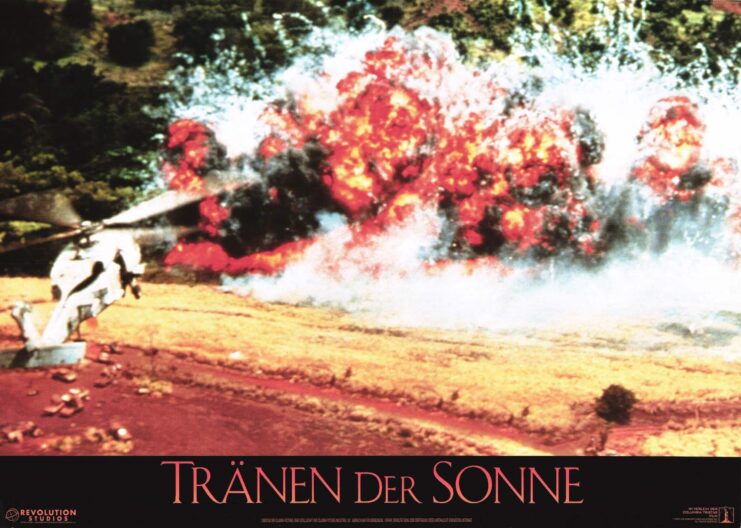
Tears of the Sun is a reasonably accurate war film. The technical advisor was Harry Humphries, himself a Navy SEAL, who also served as an advisor on Black Hawk Down (2001).
The movie depicts some of the team using the Heckler & Koch Mk. 23, a semi-automatic pistol that fires the .45 ACP cartridge. Tears of the Sun was the first time SEALs were shown using one on-screen. It also depicted others carrying the SIG-Sauer P226. This confirmed the smallest details were accurate, as the team used both weapons at one time or another.
Like many movies, however, Tears of the Sun isn’t entirely accurate. For instance, when the SEALs are given their mission, they’re told the entirety of what they’re to accomplish, including “Escape and Evasion plans/alternatives.” In reality, they would’ve been given the general objectives and planned out the specifics themselves.
Another slight inaccuracy is noted when the two F/A-18s provide air support. The aircraft fire rockets, taking out the rebel fighters. That being said, the explosions depicted on film are more akin to those from a napalm strike, rather than rockets.
These issues, however, are few and don’t take away from the fact that Tears of the Sun is an action-packed feature that’s enjoyable to watch.
Facts you might not have known about Tears of the Sun
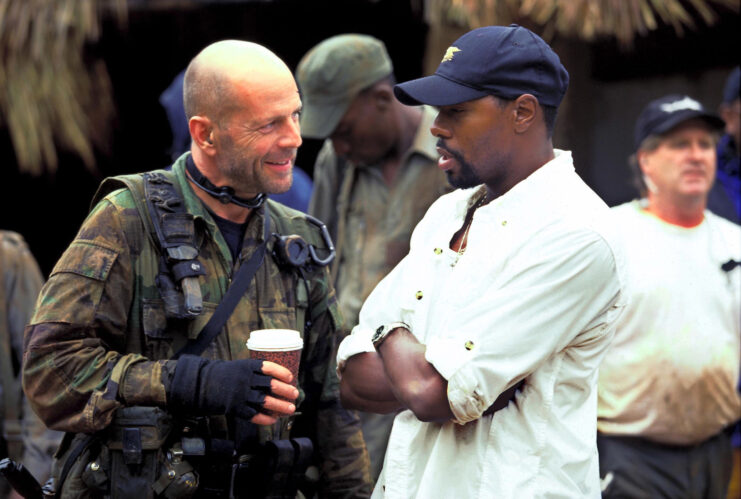
The SEAL team in Tears of the Sun travels to Nigeria aboard the USS Harry S. Truman. These scenes were actually filmed aboard the aircraft carrier, some 60 miles off the coast of North Carolina. The ship had to be continually turned, so filming could occur in the best light. The carrier’s crew also got to be part of the production, with many playing embassy staff evacuees.
For many participating in the filmmaking process, the depiction of a civil war was authentic and hard to watch. In one scene, an older man breaks down and cries after his village is the scene of an atrocity. He was a real-life survivor of genocide and being part of such a realistic film was devastating. As it wasn’t scripted, everyone else’s reactions were entirely genuine.
Many of the extras portraying refugees were real-life ones living in the United States, including the “Lost Boys of Sudan.”
Tragically, one stuntman died during filming. Nine skydivers jumped from an aircraft over Oceano, California. While they were supposed to land on a beach, one stuntman landed about 1,000 feet from shore and sadly drowned.
More from us: The Real-Life Battle Behind the Brutal Vietnam War Movie, ‘Hamburger Hill’
Tears of the Sun also saw tensions grow between Bruce Willis and director Antoine Faqua, which lasted throughout production. In fact, things became so heated that they each reported vowed to never work with each other ever again.
